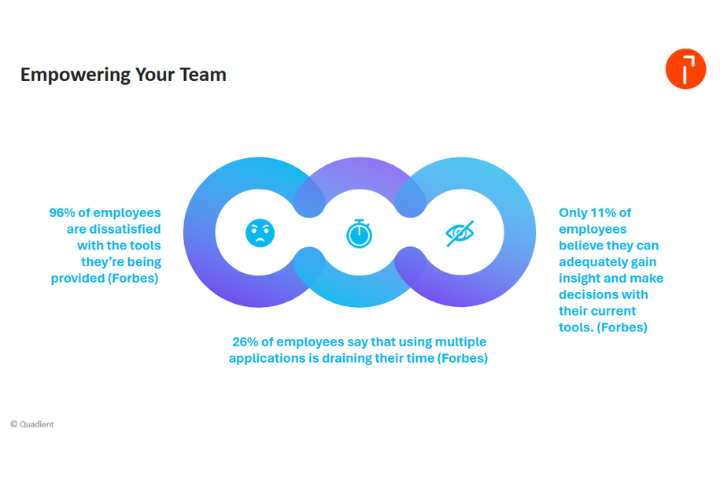
In the first installment of our blog series Revolutionising Legacy Customer Communications, we highlighted the pivotal role of a unified Customer Communication Management (CCM) platform in unlocking operational excellence. We explored how organisations are recognising the need for change because of the evolving demands of their customers or the internal pressure to drive efficiencies, while trying to manage multiple outdated systems. Building on that discovery, part two delves deeper into the often-overlooked aspect of legacy CCM solutions: the hidden costs. These are not just financial burdens but operational inefficiencies that hinder your organisation's potential to excel in a customer-first digital world.
The truth is that hidden costs lie in the shadowy depths of legacy customer communication management systems, costs that many organisations fail to recognise until they've sunk too deep. The burdens of these systems are not just surface-level nuisances; they are profound challenges that erode the very foundation of operational efficiency and innovation.
Let’s dive in.
The true price of legacy maintenance fees
At first glance, the maintenance fees for legacy customer communications products may seem reasonable. Each system comes with its own set of features and promises of support, which can justify the individual expense. However, when you start to add up the costs of maintaining multiple antiquated systems that need to interoperate, the total expense often tells a different story.
Many organisations operate a patchwork of solutions, each with its own maintenance contract. Individually, these fees might appear manageable, but collectively, they can represent a significant financial burden. This fragmented approach not only leads to higher operational costs but also complicates the management process, requiring more time and resources to coordinate across different systems. It's important to question what these maintenance fees cover. Are you receiving enhancements and upgrades that meet your evolving business needs, or are you merely paying to keep outdated systems on life support? Unfortunately, for many, it's often the latter—paying substantial sums to ensure these systems remain functional without receiving proportional value in return.
The truth is that sticking with an outdated customer communications management setup is likely costing your company more than just maintenance fees. It includes the opportunity cost of not being able to adapt to market changes quickly, the inefficiency of using systems that do not integrate seamlessly, and the increased risk of system failures and security breaches. When you consider these factors, the total cost of ownership becomes unacceptably high.
Concealed burdens of sticking with legacy CCM systems
Digging further beneath the surface, indirect costs associated with legacy customer communication management steadily mount up. The inefficiencies of outdated technology lead to an increased need for manual intervention and workarounds, making processes in contact centres, branches, and back offices labor-intensive and prone to errors. This not only slows down operations but also escalates the likelihood of costly corrections, which can come in the form of non-compliance with brand guidelines or breaches of industry regulations such as HIPAA in the United States or Consumer Duty in the United Kingdom. Additionally, the time and resources spent on troubleshooting and rectifying issues detract from strategic initiatives, stifling innovation and competitiveness in a fast-paced digital world.
These costs perpetually drain an organisation's ability to innovate and stay competitive. By shedding light on them, businesses can make informed decisions to steer clear of financial quicksand and navigate towards more efficient solutions that provide the flexibility and freedom to scale, adapt, and innovate.
Operational inefficiency and its silent spread
Outdated customer communications tech stealthily undermines wider business efficiency by creating a complex operational landscape marked by integration challenges that impede agility and innovation. These outdated platforms struggle to seamlessly integrate with broader business systems, creating operational silos that slow down processes and restrict business transformation. The reliance on legacy customer communication management tech necessitates excessive managerial oversight and manual workarounds. It typically requires that all changes, no matter how minor, are queued for IT intervention and aligned across all of the teams that own each channel-specific product. This not only places a heavy burden on IT departments but also delays the implementation of necessary changes, ultimately affecting service delivery and customer satisfaction. It’s a way of working that’s not just inefficient; it's outdated, unscalable, and unsustainable in today’s digitally driven environment and prevents businesses from reacting swiftly to new opportunities or shifting customer demands.
By contrast, a modern CCM platform puts the power safely in the hands of business users to effectively and flexibly manage the adjustment of communications templates to meet varying customer needs without exposure to risk and does so across all of the appropriate physical and digital channels through a single solution. By placing this capability in the hands of those who understand customer interactions and processes best, organisations can ensure communications are swiftly aligned with customer expectations and operational realities, leaving IT to focus on more technical elements such as establishing or optimising integration with other business systems.
Building the business case for transformation
Crafting a compelling business case requires a detailed examination of both the explicit and hidden costs your current set-up incurs. Begin by methodically quantifying them, not just the direct expenses of maintenance and operation but also the indirect costs tied to lost productivity and inefficiencies. By quantifying these indirect costs, you can clearly demonstrate the totality of the tangible impact of outdated systems and highlight the potential savings and efficiency gains from modernisation.
Highlight and quantify the strategic advantages of transitioning to a unified customer communication management platform: improved customer engagement, enhanced operational efficiency, and the agility to adapt to market changes and customer needs swiftly. Lastly, address the significant risks and costs association with inaction. These include falling behind competitors in terms of innovation, deteriorating customer trust and satisfaction due to outdated communication practices, and the escalating costs of maintaining obsolete systems. By presenting a well-rounded business case that underscores both the financial and strategic imperatives, organisations can pave the way for transformative change.
Measurements for success
Establish success metrics that are both measurable and relevant, such as customer satisfaction scores, cost reduction percentages, and efficiency improvements, to clearly demonstrate the value post-transition. To successfully champion this transformative shift, it will be important to think about the benefits and outcomes for those internal stakeholders whose buy-in is critical in decision-making. By connecting the benefits of a modern customer communication management platform to the specific needs and goals of different departments, you can build a strong coalition that supports the investment and aligns key stakeholders with the vision and urgency of the transition.
For an IT department, this might be evidencing a decrease in maintenance costs and improved system reliability. It could be the ability to automate routine communications for customer service teams, freeing up staff time for more complex customer interactions. From a sector perspective, in the insurance world, this might mean demonstrating how claims processing can be simplified and expedited, resulting in a material improvement in customer satisfaction. For the banking sector, this could be measured by a reduction in failure demand – that is, the cost of dealing with handling inquiries related to previous communications that have not been well understood by your customer base. For example, incoming calls to your call centre regarding communication on a customer’s overdraft.

A call to arms
It is only by peeling back the layers of legacy customer communication management systems that you reveal the true financial and operational toll on businesses. Outdated systems not only drain resources but also hinder growth and innovation. It's clear that modernising customer communications management technology is not merely an IT upgrade but a vital strategic transformation essential for staying competitive and satisfying customer demands. By consolidating your communication tools into a single, modern platform, you can reduce complexity, lower costs, and improve your ability to engage with customers effectively. Join us in the next installment, where we will explore actionable steps for transitioning to a unified CCM system, as well as pitfalls to avoid, setting the stage for smoother operations and enhanced customer engagement.
Did you miss part one in our blog series? Read it now! How a unified CCM platform unlocks operational excellence.







